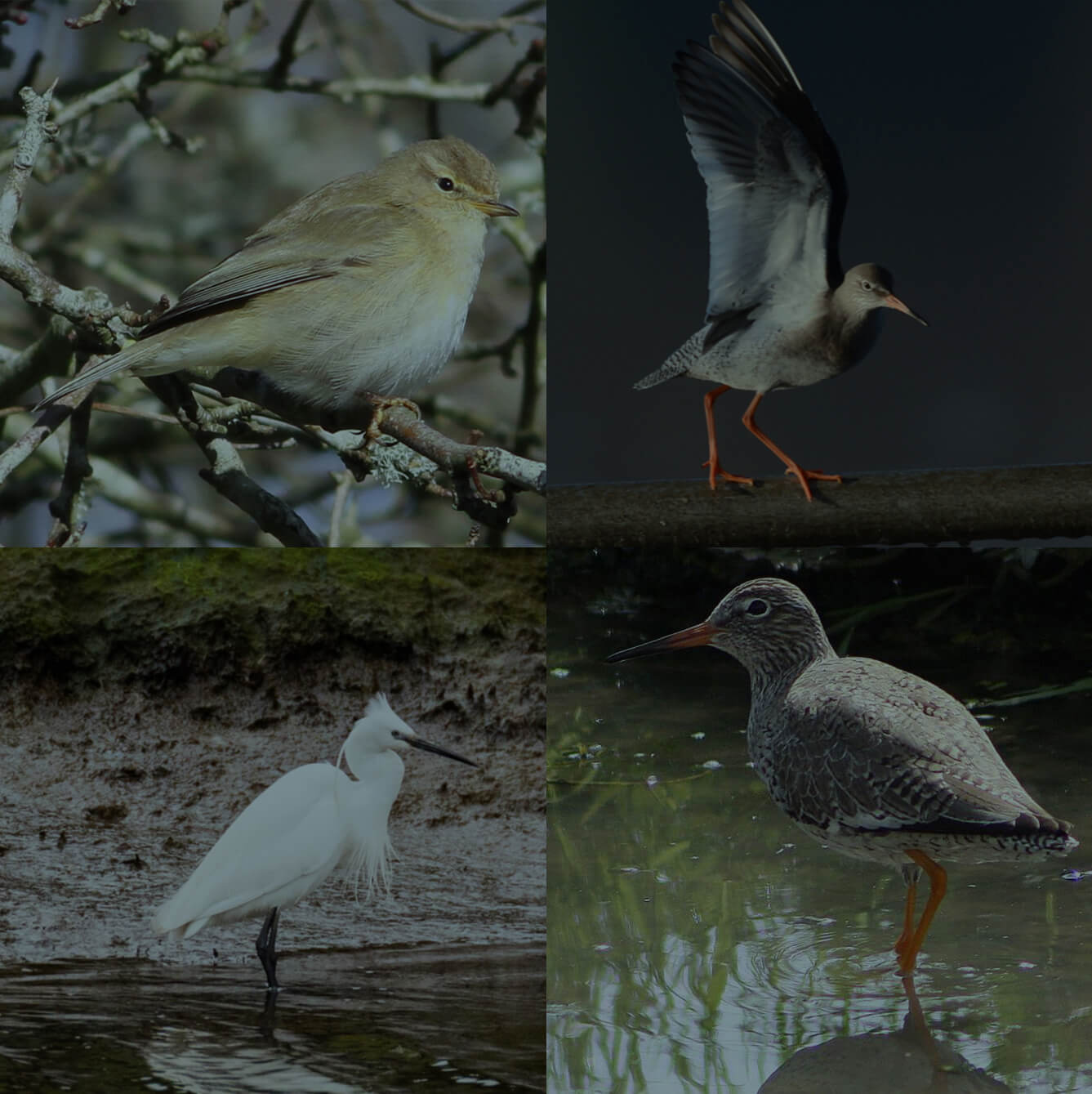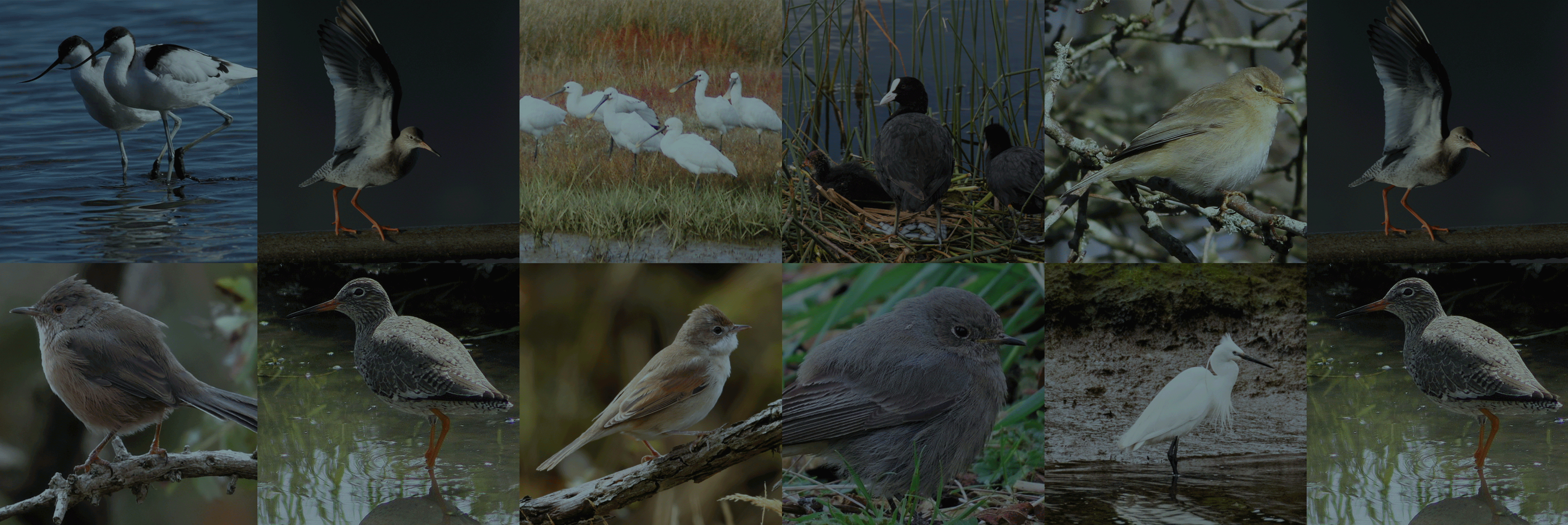A total of six grebe species have been recorded within Poole Harbour, although only five of them are either regular or semi regular. Below we describe the status and plumages characteristics of each species.
Resident grebe species
The Great-crested Grebe is one of the most well-known grebes within Poole Harbour and the United Kingdom. Their elegant displays can be seen during March when pairs return to their breeding sites. Within the harbour the best place to see birds in breeding plumage are Hatch Pond, Little Sea (Studland) and Swineham GP where young are seen throughout the summer. Once the young are old enough to fledge, breeding sites are generally abandoned, and birds move to the harbour itself. In the Autumn, flocks begin to build with the arrival of migrants generally peaking late Autumn/ Winter. During this period, the grebes moult out of their summer attire and become the largest black and white grebe to be seen in the harbour. Communal feeding flocks can total 200+ in the central and southern part of the harbour with roosts of 100+ generally noted around Furzey island and Round Island. However, Great-crested Grebes can be seen in smaller numbers around Baiter Park, Poole Quay and Studland.

Great Crested Grebe © Agami Photo Agency | Dreamstime.com
Little Grebes, also known as Dabchicks, are another resident grebe found in the harbour. They are the smallest grebe and are browner than any of the rarer wintering grebes making them easy to identify. They breed on the Brownsea lagoon, Hatch Pond and at Little Sea (Studland) but can be found in areas such as Holes Bay, Lytchett Bay and Poole Park in the winter. Like Great-crested Grebes, their numbers in the winter are influenced by migrants who begin to arrive in November through to March.

Little Grebe © Shijianying | Dreamstime.com
Over-wintering grebes
The most common out of the three over-wintering grebe species is the Black-necked Grebe. Poole Harbour hosts nationally important numbers in the winter with Studland Bay, Shell Bay and Brands Bay forming some of the most important wintering sites in the UK. Other regular records come from the South Deep area off the southern shore of Brownsea and also out in central harbour between Arne and Brownsea. This species is slightly larger than a Little Grebe but characteristically black and white in the winter. As seen in the photo, a characteristic dark grey neck, steeper forehead, longer, thinner neck and slightly upturned bill differentiates this species from the Slavonian Grebe. Before returning to continental Europe to breed summer plumaged birds develop a black neck, brown flanks and yellow ears tufts making them unmistakeable.

Black-necked Grebe © Mikelane45 | Dreamstime.com
Poole Harbour formally hosted nationally important numbers of Slavonian Grebe, also known as the Horned Grebe, up to the late 90’s, but this species has suffered a significant reduction in wintering numbers. Studland Bay is a favoured site although records from Swineham GP’s, South Deep, Baiter and other areas of the harbour are occasional. The species is similar in the winter to a Black-necked Grebe, but differences can be seen in the photos by the sloping head which has an obvious cut off line between the black forehead and the pale white cheeks as well as a thicker bill. However, in the spring and summer, when records are lowest, this grebe is easily distinguishable by the orange ‘horns’, reddish neck and black head and back.

Slavonian Grebe © Mikelane45 | Dreamstime.com
The rarest of the wintering grebes is the Red-necked Grebe. They are almost annual in Shell Bay and Studland with fewer records inside the harbour, generally off the southern shores of Brownsea but also out in central harbour too and more recently in the north Channel. Red-necked Grebes are smaller than Great-crested Grebes but larger than Slavonian Grebes. If an individual was associated with ducks, they are about the size of a Wigeon. In the winter, Red-necked Grebes are dull brown on the wings and mantle than Great-crested Grebes. A characteristic identification feature is the dagger-like yellow bill. No other grebes have yellow on the bill and this can be seen even at a distance. However, in late spring and summer, this grebe is unmistakeable with a bright red neck, contrasting grey cheeks and a black forehead.

Red-necked Grebe © Paul Reeves | Dreamstime.com
Rare vagrant grebes
The rarest grebe recorded within Poole Harbour is the Pied-billed Grebe with a single record of this American vagrant between 10th February-24th May 1980 at Little sea, Studland. Generally long staying vagrants, this bird has a similar structure to a Little Grebe but larger, plumper and greyer than any of the grebes. The characteristic black tip on a thick, heavy looking bill as well as a black chin is apparent on adults throughout the year but not the juveniles. There is generally a single record of this species in the United Kingdom each year. The best bet for the next record is Swineham GP’s, Little Sea or Poole Park.
You might also like...
Harbour Update – posted 26/07/24
It was good to get that dank, yucky murk out of the way, which allowed for some new…
Find out moreHarbour Update – posted 25/07/24
You should never right off a good days birding because of the weather, because you just never know….
Find out moreCall 01202 641 003
© 2024 Birds of Poole Harbour Registered Charity No. 1152615


